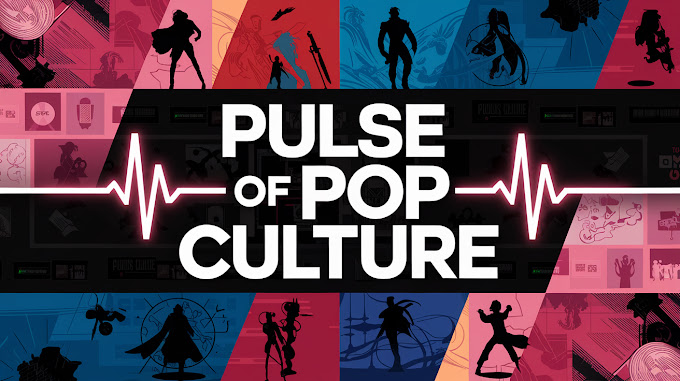Anime. It’s more than just colorful visuals, epic battles, and emotional storylines—it’s a cultural movement that has captured the hearts and imaginations of millions worldwide. But how did this art form evolve from humble beginnings in Japan to become the global phenomenon it is today? At Movement Radio, we’re always diving into the stories that shape pop culture, and today, we’re thrilled to take you on a deep dive into "The Evolution of Anime."
Early Beginnings: The Birth of Japanese Animation
Anime’s roots trace back to the early 20th century, where it began as a small offshoot of Japan’s rich storytelling traditions. Inspired by manga, traditional art forms like ukiyo-e, and Western animation techniques, early Japanese animators began experimenting with new ways to tell stories through motion.
In 1917, Japan’s first animated short films emerged, with works like Namakura Gatana by Jun’ichi Kōuchi. These black-and-white shorts were primitive by today’s standards but set the stage for what was to come. Over time, animators started to incorporate Japan’s cultural aesthetics into their works, differentiating it from the Western cartoons of the era.
The Tezuka Revolution: Laying the Foundation
The 1960s marked a turning point for anime, thanks to Osamu Tezuka, often called the “God of Manga.” His groundbreaking series Astro Boy (Tetsuwan Atom) was a game-changer, introducing serialized storytelling and emotional depth to animated characters. Tezuka’s innovations didn’t just entertain; they inspired an entire generation of creators and laid the foundation for the modern anime industry.
During this era, anime studios like Toei Animation began producing works for both domestic and international audiences. Toei’s 1958 film The Tale of the White Serpent became Japan’s first full-color animated feature and a stepping stone toward international recognition.
70s and 80s: The Golden Age of Mecha and Fantasy
As the industry matured in the 1970s and 80s, anime started to diversify. Mecha anime, with its giant robots and epic battles, dominated the landscape. Iconic franchises like Mobile Suit Gundam and Mazinger Z gained massive followings, solidifying their place as cultural staples.
On the other side of the spectrum, creators like Hayao Miyazaki and Isao Takahata began exploring more whimsical, emotional storytelling with Studio Ghibli. Films like Nausicaä of the Valley of the Wind (1984) introduced breathtaking artistry and environmental themes that resonated globally.
Meanwhile, cyberpunk and darker themes began emerging in works like Akira (1988) and Ghost in the Shell (1995), pushing the boundaries of what animation could achieve. These works didn’t just entertain—they challenged audiences, making anime a medium for exploring philosophy, technology, and society’s future.
The 90s Boom: Global Expansion
If the 70s and 80s established anime as a force within Japan, the 1990s launched it into the global spotlight. Thanks to the advent of home video and cable TV, series like Dragon Ball Z, Sailor Moon, and Pokémon became household names across the globe.
Anime wasn’t just for kids anymore. Shows like Neon Genesis Evangelion brought mature, introspective storytelling to the forefront, redefining the genre. These years also saw the rise of fandom culture, as conventions, fan art, and online forums began to form the global anime community we know today.
The Streaming Era: Anime Goes Global
Fast forward to the 2000s and beyond. The internet forever changed how we consume anime. Streaming platforms like Crunchyroll, Funimation, and Netflix opened the floodgates, making anime accessible to millions worldwide. Simulcasting allowed fans to watch shows as they aired in Japan, creating a sense of shared experience across continents.
Modern hits like Attack on Titan, Demon Slayer, and My Hero Academia have taken the medium to new heights, breaking box office records and topping streaming charts. Meanwhile, Studio Ghibli continues to create cinematic masterpieces, with films like Spirited Away (2001) becoming the first anime feature to win an Academy Award.
Anime’s Cultural Impact
Anime is no longer just a form of entertainment—it’s a cultural movement. It influences everything from fashion and music to video games and Western cinema. Filmmakers like Guillermo del Toro and the Wachowskis have openly cited anime as a major inspiration for their work.
At conventions around the world, fans come together to celebrate their favorite shows, characters, and creators. Cosplay, AMVs (Anime Music Videos), and fan art have become creative outlets for millions, further blurring the line between creators and their audiences.
What’s Next for Anime?
The future of anime is brighter than ever. With advancements in animation technology, we’re seeing even more ambitious projects come to life. Meanwhile, the growing collaboration between Japanese studios and global streaming giants ensures that anime will continue to reach new audiences.
Here at Movement Radio, we can’t wait to see what the next chapter holds. Will anime continue to break records and redefine storytelling? If its history is any indication, the answer is a resounding yes.
Final Thoughts
Whether you’re a lifelong fan or a newcomer, anime’s rich history and boundless creativity offer something for everyone. From its humble beginnings to its global dominance, anime has proven time and again that it’s more than just “cartoons.” It’s art, culture, and a testament to the power of storytelling.
Thank you for joining us on this journey through “The Evolution of Anime.” Let us know in the comments—what’s your favorite anime, and how has it impacted your life? Don’t forget to follow Movement Radio for more deep dives into the worlds of pop culture, entertainment, and beyond.



.jpg)

.jpg)
No comments:
Post a Comment